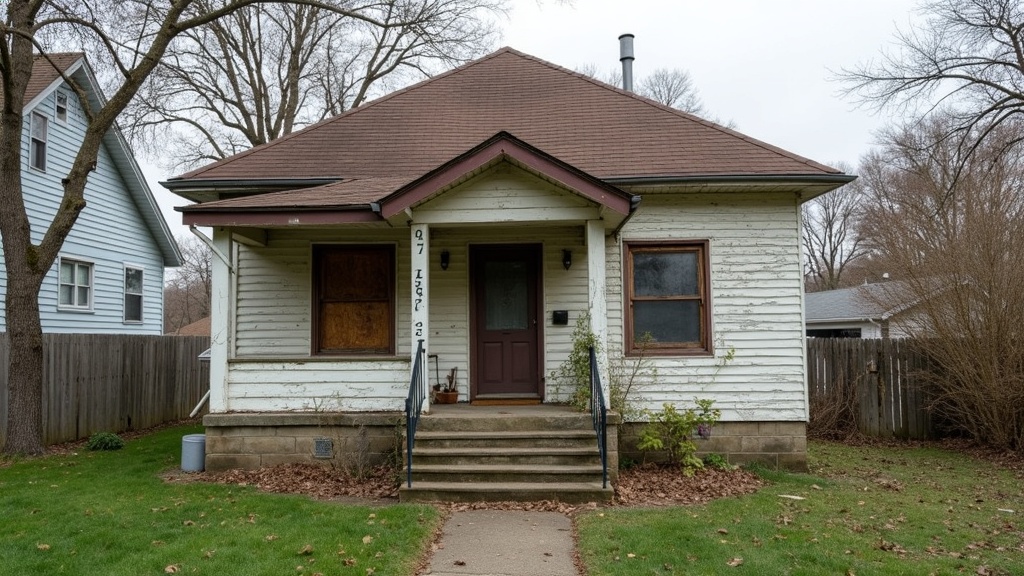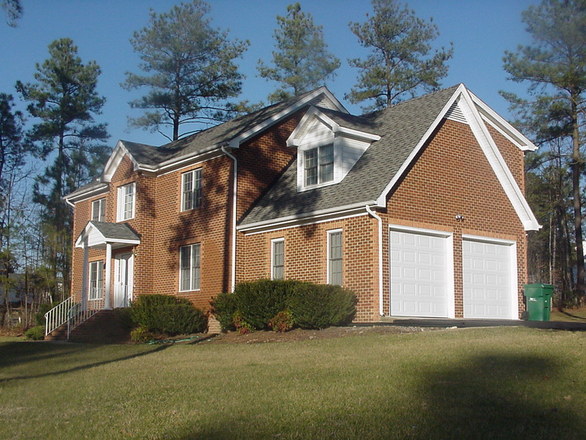Distressed properties often get a bad rap, but for anyone eyeing long-term rental income, these hidden gems can offer some pretty interesting opportunities. Whether the property’s been neglected or heading into foreclosure, or just needs some love after sitting vacant, distressed properties present the kind of value that can turn into real reward with the right approach. Here’s a full breakdown of the key benefits and a look at what getting into this side of real estate actually involves.

What Are Distressed Properties and Why Do They Matter?
Distressed properties are real estate in less than ideal shape or under financial stress. That could mean the property is under foreclosure, needs lots of repairs, or the owner just can’t handle the upkeep anymore. These homes aren’t limited to single family homes; you’ll also see them in multifamily buildings and some commercial spaces too. Neighborhoods with boarded up houses and peeling paint transform totally after an investor steps in and gets to work.
For anyone interested in rental income, these rundown properties usually come with lower price tags, making them accessible for buyers willing to put in some sweat equity. The real benefit is turning something overlooked into a steady source of cash flow, all while helping breathe new life into a neglected area. If you’re wondering why these opportunities get overlooked, it’s often because of the work, financial cost and patience involved—but those willing to put in the effort can reap big rewards.
Key Advantages of Buying Distressed Properties for Rental Income

Jumping into distressed properties isn’t about flipping for a fast buck. For rental investors, there are some real upsides that can make your portfolio stronger and set up regular streams of passive income once the transformation is complete.
- Lower Purchase Price: Sellers are often motivated, which typically leads to discounts compared to similar move in ready homes in the same area.
- Increased Equity Potential: With some rehab work, property values can jump, building instant equity and improving the long-term rental profile.
- Higher Rental Yields: Because you’re buying for less, it’s easier to generate higher rental returns, especially if demand for rentals is strong in the neighborhood.
- Community Revitalization: Upgrading and caring for distressed rentals can be a game changer for surrounding property values and neighborhood reputation, attracting more quality tenants.
- Leverage on Financing: If you use smart financing like rehab loans, you can spread your investment over time, letting the property pay for itself as rents roll in.
One factor that often goes unnoticed is the potential tax benefits or incentives for investing in certain distressed or revitalization areas, depending on your local government policies. Always check with a tax professional to get the most accurate advice tailored to your market.
How Distressed Properties Help Revitalize Neighborhoods

Bringing a distressed property back to life does more than just add to your rental pool. Fixing up homes that have been dragging down the block’s look can spark a ripple effect across the whole neighborhood. Broken sidewalks get fixed, new landscaping gets applied, and even abandoned lots get turned into parks; all because investors made the first move.
This community boost isn’t just about appearance. When you invest in these properties, you help raise overall property values for other homeowners nearby. That makes the neighborhood much more appealing to respectful, long-term tenants. Good neighbors and rising property standards benefit everyone and can even help make schools and community features better funded over time.
Things to Think About Before Buying a Distressed Property
Taking on a project property has its perks, but it’s also loaded with extras you’ll need to factor in. Here are a few important things I always keep in mind, and that tend to pop up for most folks heading into this space.
- Hidden Repair Costs: It’s common for issues to come out of the woodwork during renovation. I always budget a little extra, since surprises are almost guaranteed.
- Financing Challenges: Banks aren’t always eager to lend on homes in rough shape. Options like hard money lenders or rehab loans can help bridge the gap, but rates and terms can be different from standard mortgages.
- Holding and Vacancy Costs: It can take some time to bring a distressed property up to rental standards, so plan out holding costs like mortgage payments, utilities, and taxes during the fix up period.
- Tenant Demand and Market Rents: Research rental demand and price expectations for the area, especially after renovations. Careful research helps buyers make informed decisions. It’s sometimes good to speak to a property manager familiar with the neighborhood to get a true picture of the rental market before committing.
- Permits and Local Rules: Some municipalities require extra permits or inspections for major rehab work. Missing these can delay your project and eat into profits. Don’t forget to look up local zoning laws too.
Hidden Repair Costs
The charm of a cheap property can wear off quickly if hidden repairs start stacking up. You always want to get a thorough property inspection from a Licensed Professional. Even when properties are sold as is, to avoid surprises like foundation issues or major plumbing problems. Mechanical issues aren’t always obvious upfront however, they really count towards long-term rental value. Sometimes, bringing in specialized inspectors, like for pests or electrical systems can also save you even more money and headaches down the road.
Financing Challenges
Traditional lenders sometimes shy away from distressed homes, especially if a house is unlivable or missing key systems. For these type of properties, its best to seek out a Mortgage Broker who specializes in whats called 203K Loans or Rehab loans. These lenders will require you to work with licensed contractors—and provide specific instructions on how the Rehab process will work until completion of the project. Government programs or grants for housing improvement may also be available in some regions for properties in need of revitalization.
Holding and Vacancy Costs
It can be tempting to focus just on the purchase price, but vacancy and holding costs add up while a house is being fixed. This includes mortgage payments, insurance, property taxes, and keeping the place safe from vandalism or bad weather during renovations. Lining up contractors and scheduling jobs back to back can help cut down how long a property sits empty. Sometimes, acquiring short term insurance policies or renting out storage space on the property during rehab can offset a bit of the carrying costs.
Tips for Adding Value and Attracting Tenants
After buying, you’ll need to make the rental appealing. Here’s how to go about adding value and attracting steady tenants without overspending:
- Focus on Essentials: Fix structural and safety issues first, then update kitchens and baths. These upgrades tend to give the biggest return.
- Improve Curb Appeal: Simple landscaping, new paint, and good lighting help the property stand out to renters and future appraisers. Sometimes, even minor exterior improvements, like replacing a mailbox or updating house numbers, can create a great first impression for potential tenants.
- Energy Efficiency: Smart thermostats, energy-efficient windows, and proper insulation can result in lower utility costs—a big plus for renters. Depending on results of the property inspection, this also may include updating/replacing Hot Water heater & HVAC systems which will be beneficial once the utility bills are applied. Local utility companies sometimes offer rebates for upgrading these features, so be sure to check out available programs.
- Offer Modern Amenities: In-unit laundry, reliable plumbing, and solid Wi-Fi are big draws for long-term tenants. Little extras like ceiling fans or security systems can also attract responsible renters and potentially command higher rent. Another item will be to add LED lighting throughout the Home which will reduce number of times they have to be replaced and cut down on Electricity bills as well.
Advanced Moves: Scaling Up With Multiple Properties
Once you’ve done this a time or two, expanding your rental portfolio with more distressed properties can really ramp up monthly income. Make a habit of connecting with good contractors, property managers, and local wholesalers who can alert you to new deals or off-market opportunities before everyone else hears about them. Tracking where revitalization projects are happening like new schools, public transit, or retailers coming soon, helps to zero in on neighborhoods ready for expansion of new members into the community.
Using property management software to monitor rent rolls, maintenance schedules, and expenses will save you loads of time as you add more rentals. Networking with fellow investors through real estate clubs or online forums can also lead you to valuable tips and off-market deals, as well as referrals for trustworthy contractors and service providers. Building a good team is essential when handling multiple properties, since a reliable crew ensures projects run smoothly and tenants are well cared for. Once you have gotten to a point where you no longer want to manage day-to-day activities of multiple rehab projects and rentals, then its time to add a Property Management team that will take care of the bulk of those responsibilities.
Real-World Example: Turning a Rundown House Into Cash Flow
An investor found an abandoned three-bedroom house (in the Inner city of Indianapolis, Indiana) that had sat empty for over two years; broken windows, fading paint, and a sagging porch. He picked it up for almost 40% less than similar sized rentals because the market saw it as too much work. With about two months of repairs and some smart budgeting, he brought it up to a safe, attractive standard. Once completed, that house now is occupied with tenants paying steady rent, covers the mortgage, and even leaves some cash at the end of the month. Even better, neighbors have started fixing up their own places since, so property values are climbing for everyone. Stories like this are not rare; plenty of investors have similar experiences, especially in cities and towns undergoing economic change.
Frequently Asked Questions
Here are a few questions from new investors checking out the distressed property market:
Question: How do I find distressed properties?
Answer: Look up foreclosure listings, talk to local real estate agents, check auction sites, and even send letters to owners of rundown homes you spot in person. Online platforms like Zillow and RealtyTrac are pretty handy as well. Additionally, walking or driving through older neighborhoods and networking at real estate investment meetups can help you track down properties before they hit mainstream listing services.
Question: What’s the biggest risk with distressed rentals?
Answer: The main risk is underestimating rehab costs or time needed to get the home rent ready. Having a solid inspection, detailed budget, and some extra padding for surprises is really important. Also, market changes and tenant turnover can eat into cash flow if you aren’t prepared. Staying sharp with your numbers and adapting quickly to market trends makes a big difference.
Question: Do I need experience to get started?
Answer: Not necessarily, but learning the ropes from a mentor, a real estate investment group, or by working closely with reliable contractors helps a lot. There are also online courses and local workshops worth checking out. Reading books or blogs written by experienced investors helps shorten the learning curve, and don’t hesitate to ask questions in online forums like BiggerPockets for example.
Final Thoughts
Distressed properties can bring both financial and community benefits when turned into solid rental homes. With research, careful budgeting, and a little vision, it’s possible to build up monthly income and help strengthen neighborhoods at the same time. By focusing on smart improvements, staying patient with the process, and making informed choices, rental investors can unlock some great returns others might overlook. Remember, each property comes with its challenges, but with the right mindset and preparation, you can set yourself up for long-term success and have a positive impact on your community.


